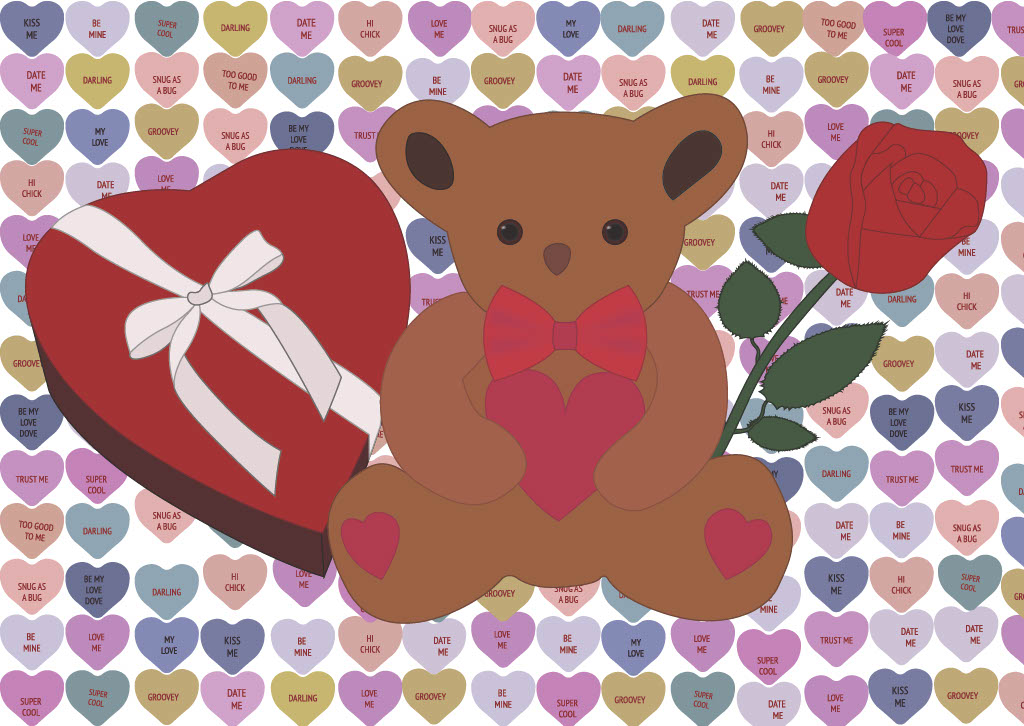As we transition into February, that inescapable day draws closer and closer. Whether you’re dreading it, excited for it or couldn’t care less, you simply cannot avoid the rampant commercialization of Valentine’s Day.
Your daily Dunkin’ run is flooded with ads for the Cupid’s Choice Donut. Try to get your shopping done at Target, and you’re dodging a sea of pink and red heart-shaped merchandise. Don’t even try walking by Paper Source — a gift and stationary store in the Prudential Center. Maybe you love embracing all the paraphernalia — I won’t pretend I haven’t indulged in a Cupid’s Choice Donut here and there — but are people really celebrating love, or has Valentine’s Day become a holiday defined by consumerism?
Many condemn Valentine’s Day for its narrow-minded stencil of what a relationship looks like. When and where did this candy and rose-embellished tradition even begin? It’s actually unknown. Historians theorize it originated from the Roman festival Lupercalia, or the Christian legend of St. Valentine.
Regardless, the holiday is fairly cemented into American culture. In 1853, The New York Times wrote of Valentine’s Day: “It is one of those mysterious historical or antiquarian problems which are doomed never to be solved.”
Americans are projected to spend $27.5 billion on the holiday this year, with shoppers expected to spend $188.81 on average for gifts. The total expected Valentine’s Day spending has increased from $14.7 billion in 2009 to $25.8 billion in 2024. The holiday has clearly been shrouded by an excessive need to buy things.
This is not a new concept. The New York Daily Tribune lamented the state of Valentine’s Day back in 1847, writing, “There was a time when Valentine’s Day meant something. … We hate this modern degeneracy, this miscellaneous and business fashion.”
The core of the holiday is well-intentioned, as the concept of celebrating love through gift giving is a manifestation of a common love language. However, feeling obligated to buy things for your significant other, family members or friends for the sake of the holiday is inherently consumerist.
Brands have gone as far as to target the non-conformists of Valentine’s Day. Last year, Sweethearts released limited edition “Situationship Boxes,” described as “sweet, muddled nothings and literal mixed messages.” These boxes were a clever marketing tactic to sell the damaged and imperfect candy hearts produced by Sweethearts, profiting off the confusing middle-ground of a “situationship.”
According to WasteExpo, the production of Valentine’s Day goods generates more carbon emissions than driving around the world 3,993 times. To break it down further, Americans will exchange 36 million heart-shaped boxes, 198 million roses and consume 880,000 bottles of sparkling wine on the holiday.
On TikTok, there is a competitive culture of posting what you got for your significant other and vice versa. One user shared all the gifts her boyfriend gave her for Valentine’s Day last year, including everything from HOKA running shoes to Glossier perfume, clothing items and more.
Videos like this only reinforce the need for excessive consumerism for social sharing. Forbes Communications Council member Leslie Poston writes, “When we see products or media trending, it’s not just popularity we’re seeing — it’s a communal endorsement, a signal that the consumer’s choice fits within the larger social narrative.”
Valentine’s Day is, without a doubt, a marketing scam. There is absolutely no need to generate this excess amount of waste and perpetuate consumerist ideals. Broken down to its simplest form, the idea of the holiday is admittedly sweet. A handmade card expressing your love for someone, a thoughtful act of service or quality time that reflects the nature of your relationship — whether that be a quiet picnic or a noisy concert — are just a few ways to celebrate love without all the frills. Every relationship is unique, and they don’t all fit into the stencil of Valentine’s Day consumerism. Unfortunately, we may be so deeply entrenched in the commercialization of it all that the holiday is too far gone from its wholesome intentions.












